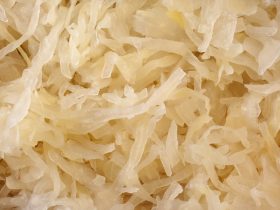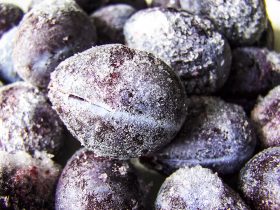Chili, the shortened name for the north Mexican chili con carne¸ is a stew-like dish most often consisting of stewed red beans, chili pepper, meat and a massive variety of other ingredients. Traditionally, the particular flavors and ingredients incorporated into this savory dish depend entirely on which part of Mexico (or Texas) it has originated from1.
As chili is relatively low cost to make in large volumes, it is not an uncommon problem for home cooks and restaurant chefs to find themselves with an excess amount of chili. Because of this, the question of whether chili can be frozen is often asked.
In short – yes, chili can be frozen quite well and in large volumes, though this will depend on a variety of factors such as how recently it was cooked and the relative strength of your freezer. In the absolutely most ideal conditions possible, chili can last for as long as six months.
What is the Ideal Temperature for Storing Chili?
According to a bulletin released by the Minnesota Department of Agriculture, most forms of chili will cool to a temperature of 70°F within two hours after cooking2. While this is simply an average and likely will not be completely accurate in your kitchen, it is a good way to gauge the length of time it takes for your chili to no longer be inhospitable to microorganisms.

As temperature is a large factor in whether bacteria and fungi are capable of taking root in your food, it is important to maintain a temperature in your food that will either arrest their development or kill them entirely.
In the case of chili, the best temperature to store it in would be approximately 32°F, or nearly the freezing temperature of water.
How Long Does Chili Last at Room Temperature?
As chili is high in protein and often served warm, it can provide the perfect source of food for bacteria and fungi to colonize.
This becomes even more of a factor when the chili is left exposed to the open air in a room-temperature environment. In this sort of storage environment, bacteria and fungi are free to grow as quickly as possible, and as such may release toxins as they eat your chili.
These toxins are harmful to consume and as such it is best to measure how long your chili has been left out in the open before consuming.
The length of time chili can last at room temperature is approximately two hours, though this may be hastened in the presence of high-moisture air.
Can Chili be Refrigerated?
In order to prevent your chili from developing microorganism cultures, it is best to place it in the refrigerator instead.
In order to refrigerate chili, it is best to allow it to cool down if you are storing it immediately after cooking, as steam may condensate within your fridge and the chili’s storage container, introducing unneeded moisture that may accelerate fungal growth.
Simply spoon the chili into an air-tight container of either glass or stainless steel, as plastic containers may absorb the smell and color of tomato owing to its unique acidic properties.
Ensure that the container of chili is kept far away from the crisper drawer where excess humidity may accelerate spoilage, as well as far away from any quickly-moving sources of air, such as a refrigerator fan or cooling vent.
Stored in the best possible conditions, chili is capable of lasting as long a time as four days in the fridge.
Why Should You Freeze Chili?
As was demonstrated in the previous sections of this article, chili is highly susceptible to developing microbial life forms if stored in the wrong conditions. The only sure-fire way to halt the development of these bacteria and fungi is to place them in freezing temperatures.
Apart from this – chili is less likely to suffer from the loss of texture quality that most other forms of food experience because of its stew-like form. While chili will likely expand owing to the effects of freezing temperatures on water, it will suffer only a minimal loss in texture.
If stored properly, chili can last up to six months in the freezer, though this will be far shorter if the chili is thawed and refrozen repeatedly.
How to Freeze Chili
Freezing chili is much simpler than freezing other forms of food, and will only require several resealable containers as well as a freezer capable of reaching 32°F.
In order to freeze chili, it is best to allow it to cool off somewhat, especially if it was only recently cooked. This will ensure that any steam will not condensate and form ice-crystals within the container, possibly rupturing it or extending the time it will take to thaw.
Spoon your desired serving size into the individual freezer-safe containers. It is best to use containers that are made of disposable plastic or are otherwise made of metal, as the tomato sauce in chili will stain plastic and leave an odor.
Ensure that approximately one inch of open space is left between the surface of the chili and the cover of the container. This is to account for the expansion of the chili once frozen, as the container may break otherwise.
Place the containers of chili in the deepest section of your freezer. Ensure that it is kept away from any fans or vents that may cause freezer burn.
What Ingredients Cause Chili to Spoil Faster?
Because chili’s particular makeup of ingredients varies wildly between recipes, it would be difficult to list the exact shelf-life of each and every single one in this article. However, the addition of a few key ingredients will significantly shorten chilis shelf-life if it is not stored properly.
Dairy ingredients such as sour cream or other milk-like products are the biggest contender as these ingredients will develop bacterial colonies incredibly rapidly. If possible, it is best to store these ingredients separate from the chili itself, and to simply add them once the chili is to be served.
Apart from dairy, the addition of high-fat pork or beef will also cause the chili to spoil faster than it should, though this will depend entirely on how the meat was handled and stored prior to being incorporated into your chili.
References
1. Walsh, Robb (2015). “The Chili Cookbook: From Three-Bean to Four-Alarm, Con Carne to Vegetarian, Cookoff-Worthy Recipes for the One-Pot Classic (origin in Mexico)”. Berkeley: Ten Speed Press.
2. Unknown author (January 2019) “Cooling Time/Temperature Control for Safety Food (TCS) PREVENTING BACTERIA FROM MULTIPLYING OR FORMING TOXINS” Minnesota Department of Agriculture





Hi, I'm Dom
Dom Eats was started to help other people fall in love with food. While cooking can feel intimidating, it doesn't have to be.